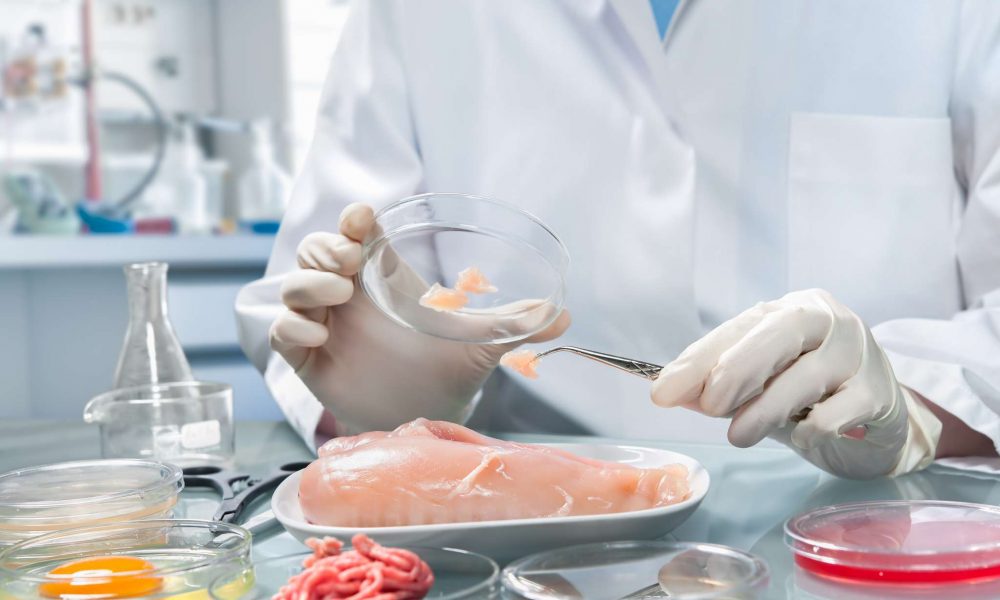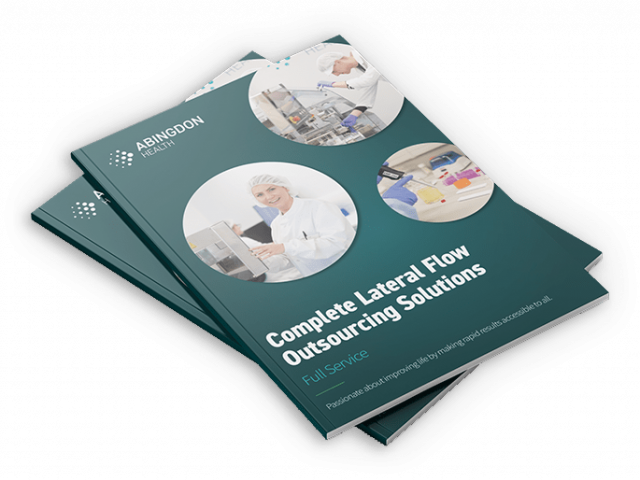Transforming Food Safety Testing with Lateral Flow Tests

What Are Lateral Flow Tests?
Versatility in, and Safety through Swift Detection
Ensuring Safety in a Changing food landscape
Cost Effectiveness and Accessibility
Lateral Flow in Action
Challenges and Future Prospects
Key Takeaways
With people all over the world battling food allergies that can be deadly, intolerances that can greatly impact quality of life, and laws being passed to protect individuals, it’s critical for food producers to ensure their lines are free of contaminants.
Enter Lateral Flow Assays (LFA), the compact and user-friendly technology instrumental in offering assurances in the safety and quality of food products. These devices have become a critical tool in providing rapid and reliable results for on-site detection of foodborne pathogens, allergens, and contaminants.
In this blog, Abingdon’s CTO, Nina Garrett, delves into the intricacies of LFA technology for a deeper understanding of how developments in this area are transforming food safety testing for the future.
What are Lateral Flow Assays?
Lateral Flow Assays (LFAs) – also known as Lateral Flow Tests (LFTs) – are highly versatile rapid diagnostic devices that can detect the presence or absence of a target analyte or biomarker, in this case a particular food pathogen, allergen or contaminant.
When testing is required, you collect a sample and add this to the LFT either directly, or via dilution with a buffer. Upon application to the test, the sample rehydrates an antibody conjugated coloured particle or ‘detector particles’ and, if present, the target analyte binds with the detector particle.
As the sample flows through the test, the detector particle bound target analyte migrates to the nitrocellulose membrane which is coated with a target analyte specific antibody. The nitrocellulose membrane immobilised antibody will bind the detector particle bound target analyte, forming an antibody-target analyte-antibody conjugated detector particle complex which in turn shows as a visible line.
This process happens within minutes, allowing for rapid detection and therefore immediate management decisions can be made.
There is a very informative video on our website explaining in more detail how lateral flow technology works, if you’d like to know more.
Versatility in, and Safety through, Swift Detection
LFAs are capable of detecting a wide range of analytes. In the food safety and production world, lateral flow assays have the ability to detect pathogens, mycotoxins, chemicals, allergens and even specific ingredients or component enzymes or proteins; the possibilities are almost endless…
This versatility is crucial in the food industry, where diverse contaminants pose a constant threat to food safety and public health. In fact, the World Health Organization (WHO) 2015 report1 estimates 600 million food borne illnesses and 420,000 deaths annually. And beyond this considerable risk to life, the WHO goes on to reference the 2019 World Bank report which indicates a total productivity loss of $95.2 billion in low- and middle-income countries alone!
One of the key advantages of lateral flow technology in the food testing industry is speed. Traditional methods often require time-consuming processes and specialised equipment, delaying the release of food products into the market. LFAs, on the other hand, can provide rapid results, enabling efficient decision-making and reducing the time-to-market for food manufacturers, which can be critical especially where quality control and freshness is paramount to safety, and ingredient shelf-life is short.
Utilising LFAs for quicker decision management could potentially reduce the risk to life and the burden to the global economy significantly.
Ensuring Safety in a Changing Food Landscape
As we’ve seen in the WHO report, consuming contaminated food products, even in low quantities, can cause foodborne illnesses, digestive issues, neurotoxicity, and other major health problems.
Listeria, Campylobacter, E.coli and Salmonella, are examples of some of the pathogens impacting us today, but with changes to the way we process and harvest food, we should expect new foodborne pathogens to emerge in society through both animal and plant-derived foods. Having a rapid and sensitive detection system like LFAs is growing in importance to ensure we are minimising the transition of these pathogens and can control outbreaks as described in the paper: A review of rapid food safety testing: using lateral flow assay platform to detect foodborne pathogens2.
Cost-Effectiveness and Accessibility
Traditional laboratory methods like enzyme-linked immunosorbent assays (ELISA), automated biochemical identification and optical systems, and molecular methods such as polymerase chain reaction (PCR) and microarrays can be costly, requiring substantial investments in equipment and skilled personnel. In contrast, lateral flow technology is relatively inexpensive and requires little to no training to conduct accurately, making it accessible and easy to introduce to a broader range of food testing facilities.
Instead of having to send your sample to a laboratory for testing, imagine the efficiencies you can enjoy by testing at the site, at a much lower cost. This would ensure effective action in managing potential foodborne illnesses. The impact is amplified when we consider LFA use in resource-limited settings, contributing to a more comprehensive, quality-controlled food safety landscape.
Lateral Flow in Action
The food testing industries adoption of LFA testing is already underway, with major food manufacturers having successfully implemented these tests to detect allergens and contaminants in their products. Research by the Food Standards Agency determined that businesses’ handling of allergens has improved greatly since 2014, with 99.9% (vs 92% in 2012) of food businesses having processes in place to check for allergenic ingredients. The rapid results provided by the assays enable these companies to streamline production processes, reduce costs, and enhance overall product quality, but there are always further improvements to consider which is where the wider development and adoption of LFAs can play a pivotal role.
Challenges and Future Prospects
While lateral flow technology has already revolutionised parts of the food industry, challenges remain. Design, sensitivity and specificity issues can arise, and ongoing research using accredited, quality-assured development and manufacturing partners is essential to overcoming this in new product development environments. Additionally, the continuous evolution of foodborne pathogens requires constant updates and monitoring by food safety organisations and producer businesses.
Looking ahead, the future of lateral flow technology in the food testing industry appears promising. Ongoing advancements in materials, science, biochemistry, and engineering are likely to further enhance the accuracy and applicability of LFAs to challenges in the food safety space. Integrating these technologies will contribute to a more robust and comprehensive approach to food safety.
Key Takeaways
Lateral flow technology has emerged as a game-changer in the food testing industry. Its rapid detection capabilities, versatility, cost-effectiveness, and ability to ensure regulatory and safety compliance make it an obvious choice for food manufacturers and testing facilities alike. As the technology continues to evolve, it holds the promise of further transforming the landscape of food safety, fostering a more secure and reliable global food supply chain, and protecting public health.
References
- Food safety (who.int)
- Full article: A review of rapid food safety testing: using lateral flow assay platform to detect foodborne pathogens (tandfonline.com)

